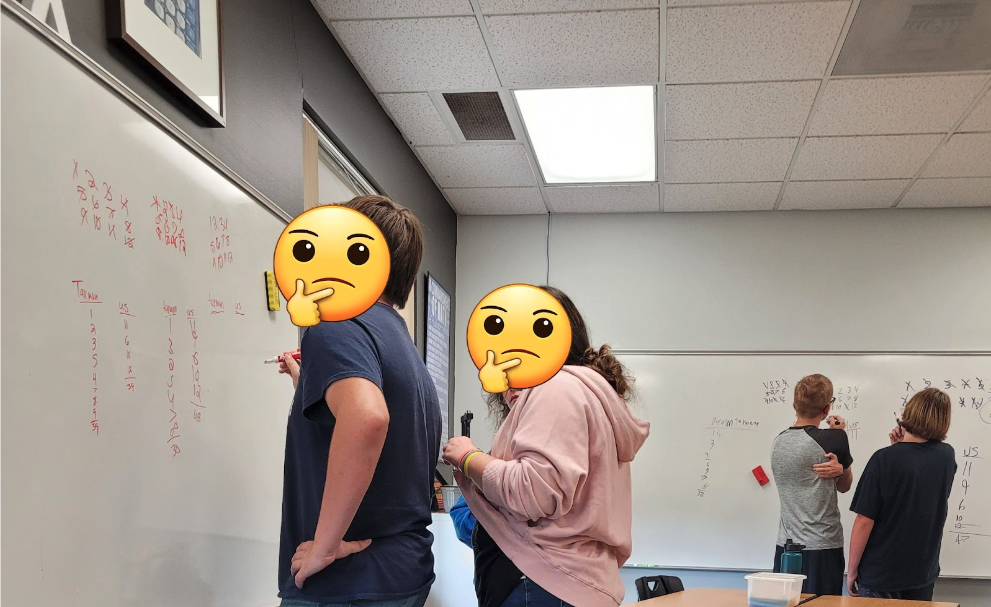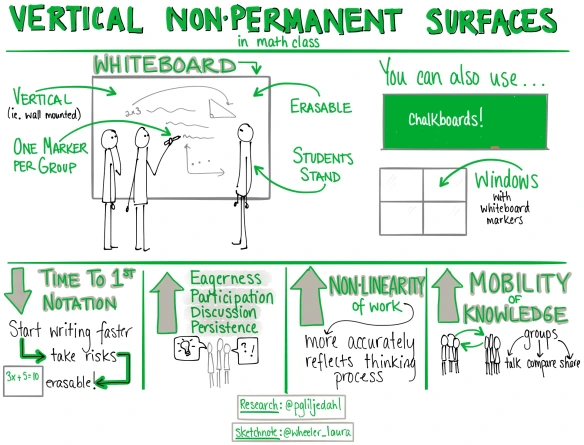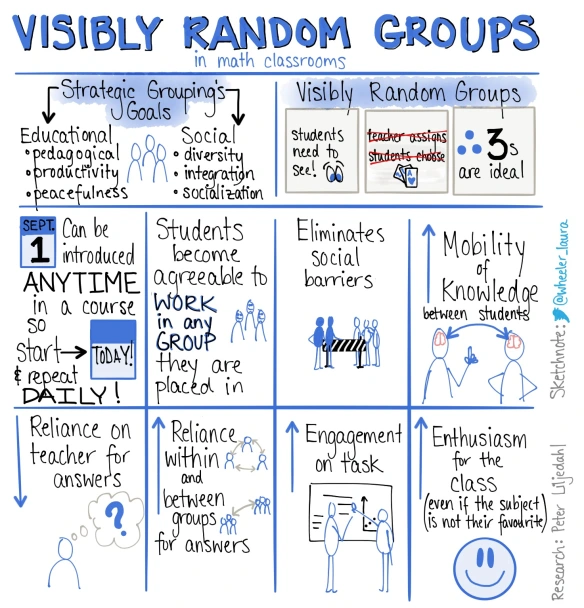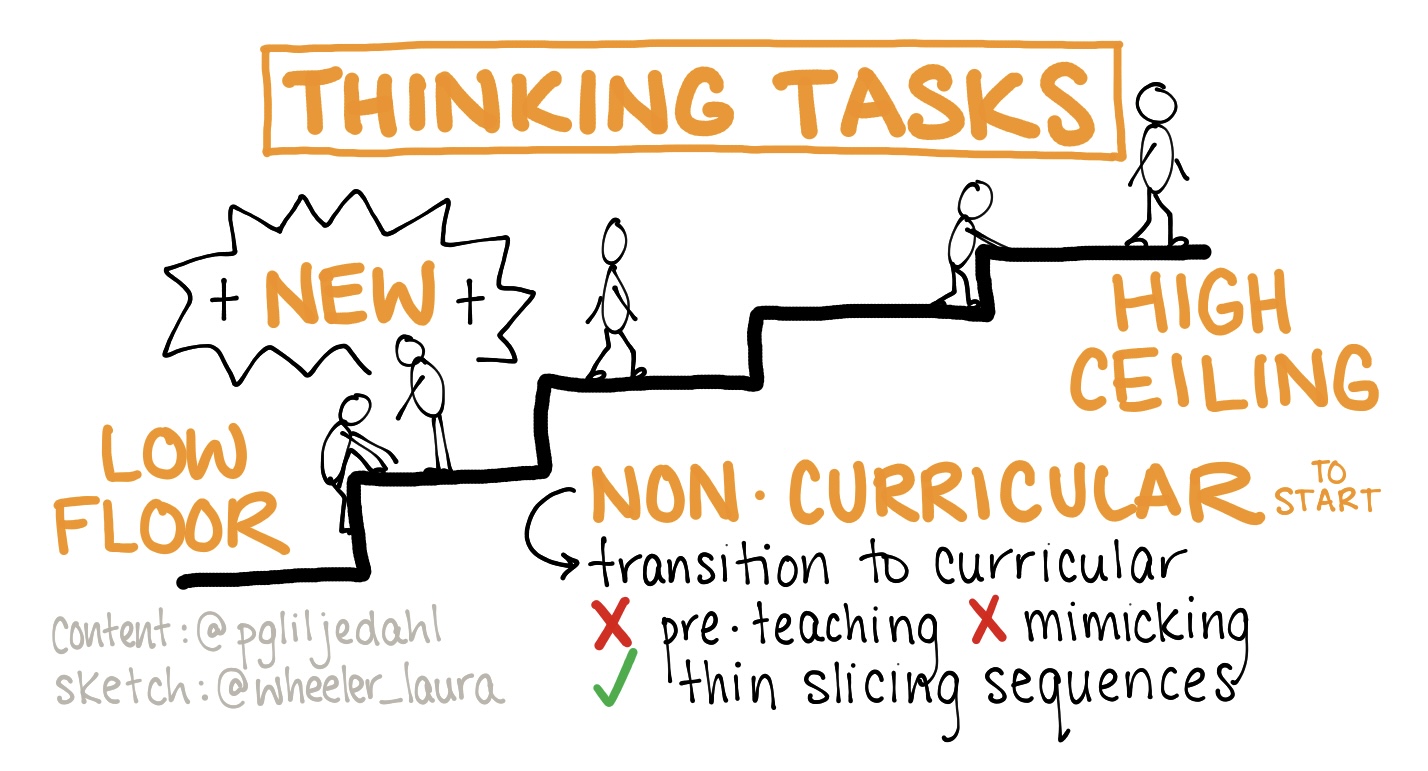Building a Thinking Classroom Together: October
Whether you are teaching primary or post-secondary, the Thinking Classroom is for you. It is a change in the way you teach, but I promise it is worth it. For years I was searching for better ways to get my students engaged in their learning of mathematics. The Thinking Classroom (BTC) was the answer I was looking for, and I am still amazed at how easy it was to implement. If this is the first time you are hearing about the Thinking Classroom, there are many great resources out there. Here is a video of a session I did for MDE and MCTM that will help you become more familiar with it: https://youtu.be/FYOWg8y1K54.

The math teachers of Minnesota have a great opportunity to journey through the Thinking Classroom. We started a few years ago with presentations at MCTM conferences and now get to have Peter Liljedahl himself come to Minnesota to share his research with us in April at the MCTM conference! We are all on different parts of the journey and I would like to dedicate this part of Mathbits to creating a place for us all to ask questions, share successes, share frustrations, and learn more.
Each month I will share questions and stories sent to me about the Thinking Classroom. I will do my best to answer the questions, help think through a solution, or celebrate with you.
If you have a question about the Thinking Classroom, or if you have a story or success that you would like to share, please:
- Email me at jstrom@win-e-mac.k12.mn.us.
- In the subject line, please put “Building Thinking Classrooms Together” or “BTCT”.
- Let me know
- how to refer to you (name, location, anonymous…)
- what grade level you teach
Without further ado, let’s get started.
From Becky R. in Southern Minnesota,
“I just finished reading the book and want to start implementing BTC, but don’t want to be overwhelmed. What would be a recommendation for something manageable to try first?”
 Many people think they have to do all fourteen practices to be doing the Thinking Classroom. However, the first three are plenty to start with: Vertical Non-Permanent Surfaces, Visibly Random Grouping, and Tasks. Also, it would be overwhelming to try to do this every day to start with, especially if you have multiple preps. When I first started, I tried to do it 2 or 3 times a week. As I worked through the year, I would ask myself how I could change my traditional lesson to a BTC lesson, especially if I wasn’t excited to teach my old lesson. I don’t know when the full transition happened, but now, five years later, my students are at the board every day (unless we are using Desmos or testing). I guess I built on it each year until almost every lesson is a BTC lesson.
Many people think they have to do all fourteen practices to be doing the Thinking Classroom. However, the first three are plenty to start with: Vertical Non-Permanent Surfaces, Visibly Random Grouping, and Tasks. Also, it would be overwhelming to try to do this every day to start with, especially if you have multiple preps. When I first started, I tried to do it 2 or 3 times a week. As I worked through the year, I would ask myself how I could change my traditional lesson to a BTC lesson, especially if I wasn’t excited to teach my old lesson. I don’t know when the full transition happened, but now, five years later, my students are at the board every day (unless we are using Desmos or testing). I guess I built on it each year until almost every lesson is a BTC lesson.
 As you are going, you will find that you want to do better at something and find that one of the practices addresses that. Peter has the practices divided into the four sections. The first section are the three musts: VNPS, VRG, and Tasks. The next two sections will help you improve your practice, so when you are frustrated with something, look at those two sections for guidance. The last section can wait until you are ready to change your grading and testing system (I implemented this in year four).
As you are going, you will find that you want to do better at something and find that one of the practices addresses that. Peter has the practices divided into the four sections. The first section are the three musts: VNPS, VRG, and Tasks. The next two sections will help you improve your practice, so when you are frustrated with something, look at those two sections for guidance. The last section can wait until you are ready to change your grading and testing system (I implemented this in year four). 
If trying to implement too many of the practices is stressing you out, then back up and do what you can handle. Meaningful notes can wait for when you have time to create them and changing homework to “check your understanding problems” can wait until you are ready to change how you grade. What type of questions to answer, getting students to build autonomy, and consolidating are going to be natural things you improve upon as you teach.
Until next time, keep on building! Together we will build a generation of thinkers.
Jessica Strom
Win-E-Mac School
MCTM High School Vice-President
